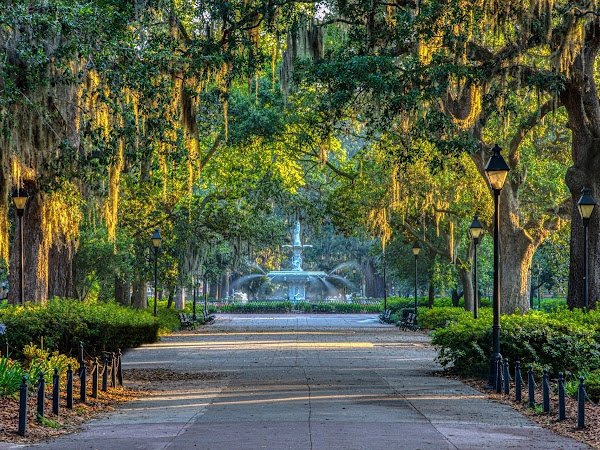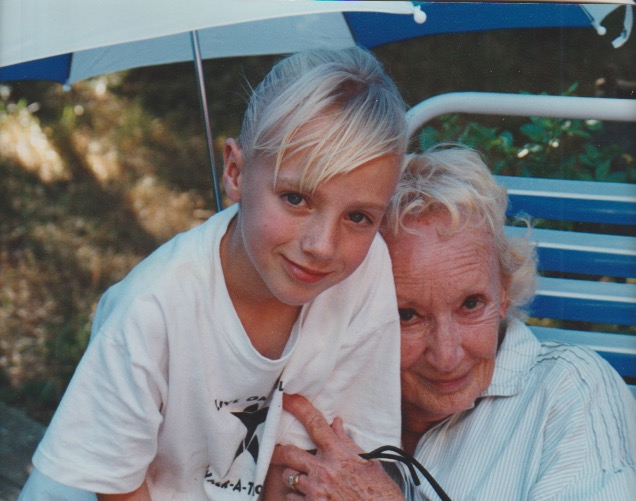LOW COUNTRY HAUNTING; the absolutely true story of a ghostly encounter in Beaufort SC
I do not have psychic abilities. I have never been drawn to ‘haunted’ places nor have I sought out encounters with ghosts. But in an old house in the Low Country, I experienced something so frightening and so inexplicable, that from that day forward I became a believer in the paranormal.
Some years ago, my husband and daughter and I were treating ourselves to a winter getaway, exploring Savannah for the first time. We had a fabulous time riding a horse-drawn carriage through the squares, marveling at the moss-draped live oaks lit with fairy lights, and splurging on sumptuous meals at The Olde Pink House and Mrs. Wilkes’ Dining Room. We stayed at an excellent B & B on Jones Street, and were looking forward to trying another historical hotel on the last night of our trip when we toured Beaufort, SC.
I’d heard about the unique beauty and atmosphere of Beaufort, and when we arrived there from Savannah, we were certainly impressed by how strongly it appeared to be existing in its own time and place. In fact, as we rode around the area on rented bicycles, it quickly became clear how many layers of history this small coastal community possesses, going back to the 1600s. Unlike our experiences of Charleston and Savannah, however, Beaufort’s history began to weigh heavily on me. Across hundreds of years of piracy, warfare, pestilence, and human trafficking on a massive scale, with thousands of Africans enslaved on local plantations, it was probably inevitable that tragedy became worked into the fabric of this place, because all I began to see in the long trailing fronds of Spanish moss was heartbreak.
At St. Helena’s Episcopal Church, established in 1712 when it was part of the Church of England, we learned about the Yemassee attack in 1715, when early parishioners were killed by Native Americans conducting raids as they tried to drive white settlers off their lands. We learned about how the church was used as a hospital by the Union Army, which occupied Beaufort from late 1861 until the end of the war. Soldiers tore slabs from the churchyard to serve as operating tables, where many wounded Yankees and some Rebels died and were buried. Among the graves stands a brick mausoleum, looking like a moss-covered hut rising out of the ground. It holds the remains of a Dr. Perry, who was so terrified of being buried alive that he instructed his family to inter him with a loaf of bread, a jug of water, and that all-important tool for resurrection, the pick-axe. (So far, the fearful doctor has not smashed his way out.)
In our ramblings that day we also came across many reminders of the thousands of Africans forcibly brought to the low country to spend their lives working on rice and cotton plantations. West Africans were especially prized by South Carolina planters for their skill at cultivating rice: the toil of these enslaved Africans, along with those forced to cultivate sought-after Sea Island cotton, made Beaufort one of the wealthiest communities in the southern United States prior to the Civil War. Their labor built the white-columned mansions that are widely admired today.
By the time we checked into our hotel that afternoon I was feeling oppressed instead of uplifted, and I just wanted to collapse on a soft bed and sort through my complicated thoughts. However, management at our hotel, what I’ll call ‘The Blue House Inn,’ had something entirely different in store for us. Despite the fact that I’d booked our reservation at the antebellum home-turned-hotel several months in advance, requesting a spacious room for the three of us on an upper floor (I had visions of sitting on the veranda with a bourbon in hand, watching the sun set), the manager told us we would be staying in one of the basement rooms. The Blue House Inn prohibited children under 12, and despite the fact that our daughter was a shy 13-year-old not given to swinging from the light fixtures, and given that this was the off-season and the hotel wasn’t crowded, it’s likely that this particular manager wanted to keep families out of the way of the trendier folks upstairs. That meant installing us below-stairs. I tried to protest, but we were exhausted by then, and not inclined to forfeit our deposit. My husband accepted the key and we all took our luggage downstairs.
Claustrophobia gripped me from the moment I rolled my suitcase across the threshold. A few windows close to the ceiling allowed some illumination, but the basement’s walls were at least two feet thick, built of stone. No amount of flowery bed linens or bright lamps in the corners could dispel the sense of being confined underground. My husband and I did our best to make it fun for our daughter, but I was glad we were only staying one night in that space.
Soon we were all in our beds, lights out, with my family sleeping around me and a dim bluish light shining in the windows facing the street. I lay there trying to relax, but I was too tense to sleep. A sense of dreadful foreboding began to creep along my limbs, and this sense was followed by the certainty that someone else was in the room with us. It was a male presence, I was sure of this, and he was standing in a pool of darkness by the door to the small bathroom. My husband could sleep through Doomsday (and probably will), but I was desperate for him to wake up and ward off this entity in the corner. The problem was I couldn’t speak or move. At the same time, I feared for my daughter, who was alone in the double-bed beside ours. I knew that the sad, dark presence in the corner desired something from the living, and I was afraid he would take it from me, or worse, from my child.
The minutes passed in an excruciating state of tension while I kept my eyes tightly closed and began telling myself that I was getting worked up over nothing. Ghosts aren’t real, I told myself. Dead people can’t exist in the world of the living.
“HELP ME!” a voice cried in my ear.
Do you know how writers say in ghost stories that their “blood froze”? That is precisely what happened when this phantom spoke to me; he was so close that I felt his moist breath on my cheek. My body and my blood turned to ice, but my heart knew that I had to act. I had to get out from under the covers and leap into my child’s bed, to protect her.
Somehow, I did this, snatching the car keys off the nightstand as I did so. I must have been thinking that Lily and I would dash out of the Blue House Inn, leap into the 4-Runner and book it out of Beaufort if the haunting continued. Thankfully, it did not. I stayed awake the rest of that night, and as I held my little girl in my arms and watched the dawn finally break in that antebellum dungeon-room, I felt profoundly privileged to know that I would be carrying on that day in the land of the living. Life is a precious, precious thing: I wanted to live it then so fully that my regrets – or misfortunes - would never bring me back to haunt historic hotels out of lonely desperation.
I’ve not returned to Beaufort, and I doubt I ever will. I don’t need to see the place to reinforce the lesson I learned there: that there are some things in this universe we can’t explain. Maybe we aren’t supposed to. I’ve often wondered what the phantom of the Blue House Inn was seeking from me and have asked myself if I couldn’t have done more to ease his suffering. But what could I have achieved in one night? What kind of tools would I have needed to penetrate the veil that separates us, living and dead?
The next morning my husband reported my experience to the manager, eager to hear what her response would be and to know if other guests had gone through similar ordeals. I wanted no more interactions with the Blue House Inn, however, and hid out in the breakfast room with Lily, counting the minutes until FK would be ready to leave. He joined us there shortly, dismayed that the manager had been dismissive of my haunting. She suggested that I might have drunk too much before going to bed, and denied that any other guests had reported visitations.
From my point of view, her response seemed fitting. I imagined it was the sort of attitude that would have prevailed in the house when it was the manor for a rice plantation, and enslaved human beings were denied compassion or sufficient care. Such an attitude would have allowed the privileged ones living above-stairs to believe that they were preserving the natural order of Haves and Have-Nothings, with punishment being meted out in the cellar to certain troublesome (and tragically unlucky) Have-Nothings.
The white-columned American South? It’s a fraud. It’s the elegant façade that masked a system built on suffering. My advice? Enjoy the other-ness of historic southern cities like Savannah and Charleston and New Orleans, but while sojourning there, acknowledge the legacy of sorrow and strife that has produced this uniquely American form of authenticity. It is hard-earned.
Still more advice? If you’re staying in the Low Country, don’t let them put you in the basement.












Comments
Post a Comment
Thanks for dropping by!